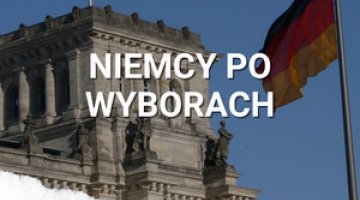German support for Ukraine: taking the communications initiative
According to a list of the government’s bilateral assistance to Ukraine published by the Chancellor’s Office in late December (Deutsche bilaterale Unterstützungsleistungen für die Ukraine und Menschen aus der Ukraine), Germany estimates the value of its support for this country between 24 February and 21 December 2022 at €12.5 billion. The scale of this assistance was also mentioned by Chancellor Olaf Scholz during his phone call with Ukrainian president Volodymyr Zelensky on 6 January.
The publication of this list is part of an attempt by German diplomats, officials and experts (including at closed meetings with representatives of the foreign press) to take the initiative in portraying Germany as the leader of the region’s assistance to Ukraine in every dimension. The 18-page document was prepared on the basis of data collected from all the federal ministries. It contains what is in reality a very broad catalogue of support for Kyiv, which gives the impression that assistance is being systemically provided to the Ukrainian state.
The publication (see Appendix 1) lists funds already provided and planned. However, instances of bilateral assistance are sometimes merged with international programmes (such as those financed from the foreign ministry’s budget) in the report. Moreover, as the starting dates of some of these projects have not yet been specified, it is difficult to determine which of them (especially in the area of energy and development cooperation) were launched before 24 February last year, and therefore which of the amounts given only involve an increase or continuation of existing cooperation.
The German government’s assistance to Ukraine also includes some funds provided to Ukraine’s neighbours (including Moldova, Romania and the Eastern Partnership countries) in the very broad context of the ongoing war (for example, the sum of €11.2 million in support for democratisation and stabilisation in the neighbouring countries, as well as media monitoring in Romania). The provision of assistance to selected Russian NGOs, which also qualifies as support for Kyiv, is another special case.
Support programmes for German institutions hosting Ukrainian scientists, experts and students, as well as the transfer of funds to guarantee the operations of various institutions (such as Goethe Institutes) and German political foundations in Ukraine constitute an important part of the assistance to Ukraine. Berlin is also establishing the so-called Exzellenzkerne long-term scientific cooperation projects, which are scheduled for implementation after 2024. In addition, some of the funds are being used for counselling provided in Germany or online, hotlines on issues such as customs clearance of aid delivered to Ukraine, and online medical assistance (such as the Charité clinic in Berlin).
Commentary
- The document, published in December, is the first compilation that provides a comprehensive overview of the German government’s ongoing support for Ukraine since the outbreak of the war. Until then, the studies published by the Kiel-based Institute for the World Economy (IfW, Ukraine Support Tracker) had been the most popular source of information on the scale of this aid. However, several methodological weaknesses of the IfW were pointed out abroad; for example, the figures for the aid provided were rather approximate, as they aggregated both declared and actual support, and failed to include the full contributions of other countries in the list of assistance leaders, often as a result of not having access to all the data. The reported value of Germany’s military support to Ukraine is an example of this inaccuracy; according to the IfW’s calculations, it totalled €2.34 billion from 24 January to 20 November last year, €90 million more than the government figures showed.
- All the key ministries involved in assisting Kyiv have created special subpages online to provide in-depth information about German support; these are usually also available in English, Ukrainian and Russian. In addition, the website Germany4Ukraine has been running since the beginning of the war; this provides data on specific forms of assistance, as well as advice and practical tips for Ukrainians seeking refuge in Germany. These activities are aimed at promoting German support both at home – among German citizens – and on the international stage.
- In addition to its immediacy, the assistance provided is also aimed to attract human capital to Germany, hence the numerous examples given of funding scholarships and setting up jobs for Ukrainian scientists, students and experts in German institutions and NGOs. In this way, Berlin hopes to expand a network of connections that will also come in useful after the end of hostilities, especially in view of the labour shortage in Germany. Incidentally, the assistance extends to German organisations that have previously had very little to do with Ukraine (like the Foundation for the Study of the Dictatorship of the Socialist Unity Party of Germany).
- The majority of Germans have consistently favoured supporting Ukraine. In addition, support for increasing arms supplies is rising, with 25% of respondents in favour (up 4 p.p. compared to November, according to an Infratest dimap poll from 5 January). At the same time, 41% of respondents believe that the current level of assistance in this field is satisfactory, while 26% would like to see a reduction in military support. In addition to international pressure, this is another factor strengthening the willingness of Chancellor Scholz’s government to continue and increase its assistance to Ukraine.
Table. Component and total costs of assistance to Ukrainian refugees (as of 4 January 2023)

Source: author’s own compilation based on OECD data (oecd-ilibrary.org).
Appendix 1. Selected aspects of the document published by the Chancellor’s Office: the two pillars accounting for more than 73% of declared German assistance
Funding for hosting refugees:
• The largest share of bilateral assistance (56% of the figure of €12.5 billion) has been allocated to support for refugees inside Germany. This includes €5 billion from the finance ministry’s budget for subsidies to the local governments that have been taking care of arrivals from Ukraine in 2022 and 2023, as well as €2 billion earmarked for social benefits for refugees (see table).
• Around one million refugees from Ukraine have been registered in Germany (data from AZR, the Central Register of Foreigners). However, after taking into account the number of those registered with the Federal Employment Agency as well as children in schools and kindergartens, the actual number of war refugees in Germany is lower, around 809,000, including about 200,000 children attending school (together with those attending nurseries and kindergartens, they number 357,000 in total) and 452,000 people registered with the Federal Employment Agency. Ukrainian refugees collectively make up around 1% of the population of Germany.
Military support:
• According to the document, €1.93 billion had been allocated for military support by 5 December last year; it was expected to reach €2.2 billion by the end of the year. These figures incorporate the value of export ‘licences’, so they include the assistance that has already been provided, as well as ongoing and planned support. It is therefore impossible to make a precise estimate of the value of German military support that has already been delivered to Ukraine. The actual value of the assistance which the Ukrainian army has received may be just half of what has been declared (for example, Kyiv has so far received only one of the four promised IRIS-T air defence batteries, which are the most expensive item in the entire package).
• It should be stressed that the government has included all donations to Ukraine’s uniformed services (and not just the Armed Forces) in the ‘military support’ category, including the supply of 195 power generators, 35 ambulances, 78 vehicles for border guards, 280 trucks, as well as minibuses, quads, fuel and the like. Therefore, this category is not limited to arms, military equipment or war material (for a full list, see ‘Military support for Ukraine’).
• The German government figures show that the heavy weapons and ammunition that Ukraine needs most are still a marginal part of German assistance, and that Germany’s support in this area is many times lower than Poland’s, and also less than the support provided by countries such as the Czech Republic and Slovakia. For comparison in selected categories:
- tanks – min. 260 (PL) : 0 (DE);
- armoured combat vehicles – 40 (PL) : 0 (DE);
- 155-mm artillery – 18 (PL) : 14 (DE);
- 122-mm artillery – min. 20 (PL) : 0 (DE);
- multi-track missile launchers – min. 20 (PL) : 5 (DE);
- anti-aircraft missile launchers – S-125 Neva battery (PL) : IRIS-T battery (DE).
By far the most expensive component of German assistance is the IRIS-T battery, which is worth at least €420 million.
Appendix 2. Selected bilateral assistance projects (amounts of support are not always provided)
- Support for Holocaust victims through the Conference on Jewish Material Claims against Germany (one-off payments to some 10,000 people in Ukraine): €12 million in total;
- Aid for pets from Ukraine: €5 million;
- Coordination of transport and assistance in the movement of Ukrainian refugees within Germany: €90 million;
- Recognition of travel documents held by Ukrainian drivers, toll exemptions for humanitarian transports;
- Creation of 14 positions in the Federal Prosecutor’s Office to handle proceedings related to the war in Ukraine;
- Support for the introduction of an emissions trading scheme in Ukraine: €3 million;
- Strengthening biosecurity in Ukraine: €808,000.
(For a full list of the projects funded by the German government, see Deutsche bilaterale Unterstützungsleistungen für die Ukraine und Menschen aus der Ukraine).




